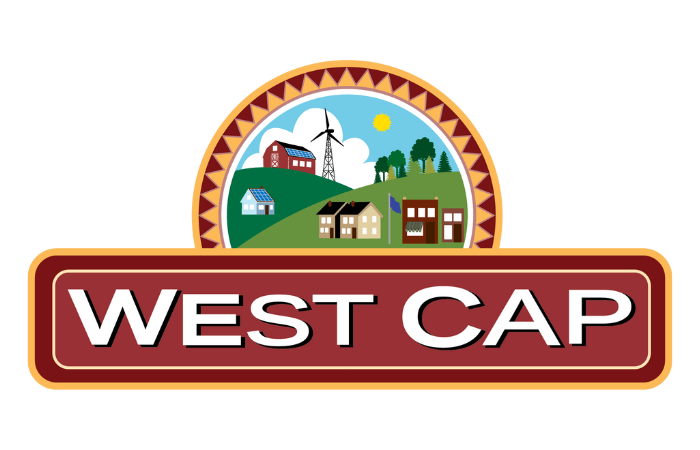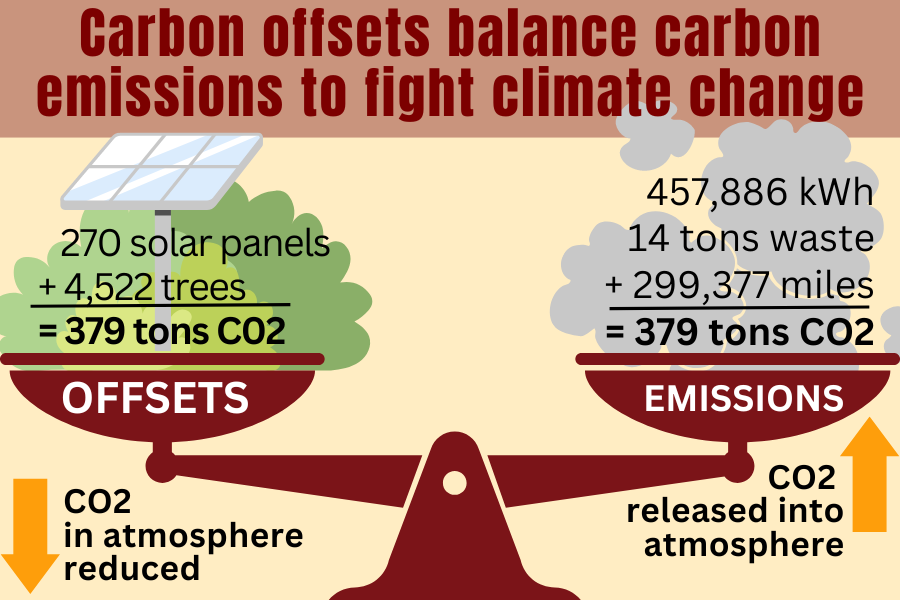As part of the agency’s commitment to sustainability, West CAP created an internal “Green Team” in 2022 to tackle part of our mission, which is to work to create a more just and sustainable society. The team meets bi-monthly to take actionable steps to reduce the carbon footprint of West CAP’s operational facilities and vehicle usage. To support their efforts, the GreenT eam received a sustainability grant from Associated Bank through the WISCAP network, which allowed us to calculate and offset a large portion of our agency’s annual carbon footprint.
What is Carbon Offsetting?
Carbon offsetting is the process of funding projects that reduce or remove greenhouse gas emissions to compensate for one’s own emissions, in order to achieve a net zero carbon footprint. Each ton of carbon absorbed from the atmosphere equals one carbon credit or carbon offset. Many carbon offsetting projects exist across the U.S. and internationally as well, such as forest and land restoration, planting trees, carbon-storing agricultural practices, and waste and landfill management. Greenhouse gases mix throughout the atmosphere, so reducing or storing carbon anywhere contributes to overall climate protection.
How is it calculated?
With the help of reputable online carbon calculators, we estimate releasing about 379 tons of CO2 into the air in an average year through direct West CAP operations.
- Total miles driven by our Weatherization crews in 2022: 215,807 miles
- Total miles driven for work by staff in 2022: 83,570 miles
- Total electricity kwH across (4) operations facilities in 2022: 148,360 kWh
- Total natural gas to heat (4) operations facilities in 2022: 10,564 therms
- Total estimated waste created by 72 employees in 2022 after recycling: 14 tons
- These emissions equate to 729,999 lbs of CO2, or 365 US tons.
- At $15.57/ton, that total offset would cost $5,682.
We entered calculations into the National Indian Carbon Coalition’s online calculator. At $15.57/ton, the total offset would cost $5,682 through the work of that coalition’s carbon sequestration projects.
How is carbon offset?
With $4,000 in grant funding, we were able to offset about 257 tons of CO2, almost 70% of our agency’s carbon footprint for 2022, creating a genuine, measurable reduction of carbon dioxide in the atmosphere through a carbon sequestration project of the Fond Du Lac Band of Lake Superior Chippewa. This forest-based carbon sequestration project is being developed as part of the Tribal Land Conservation Initiative of the National Indian Carbon Coalition based in St. Paul, MN. The project covers 9,197 acres of tribal forest land that will sequester more than 77 metric tons of carbon dioxide equivalent (MTCO2e) per acre, totaling a reduction of over 700,000 metric tons of CO2.
How else can we reduce carbon?
As an agency, West CAP is also taking actionable steps to reduce the carbon we create through other internal practices, including:
- Offering flexible Work-From-Home Options
- Working to reduce paper usage with the use of electronic forms and signatures
- Working to achieve Zero-Waste Break Rooms
- Exploring and prioritizing sustainable-friendly vendors
- Seeking funding to replace outdated HVAC systems
- Incorporating fruit trees and/or garden spaces into affordable housing properties
- Exploring funding for electric fleet vehicles and charging stations for weatherization crews
- Increasing community engagement and outreach related to sustainability
Fruit Trees!
Another key outcome that came from our Green Team was the idea to incorporate fruit trees and garden space into our affordable housing properties. With a portion of the funds remaining after our carbon offsets, we purchased 2 six-foot apple trees with mulch, fencing, posts, and netting, and are planting them at our affordable housing property in Clayton, WI, which consists of two 4-plexes known as CAP Town Homes. We chose this particular property for its availability of green space and because they are three-bedroom units and historically house families with children.
Fruit trees provide free, healthy food for low-income residents, add to the beauty of the space, and support an eco-friendly environment. In the coming years as these trees bear fruit, they will directly benefit up to 24 tenants or more who call this property home. Part of what makes trees so impactful is that a healthy tree can give generously for decades, if not longer. While a vegetable garden requires planting and continual maintenance every season, trees do not.


